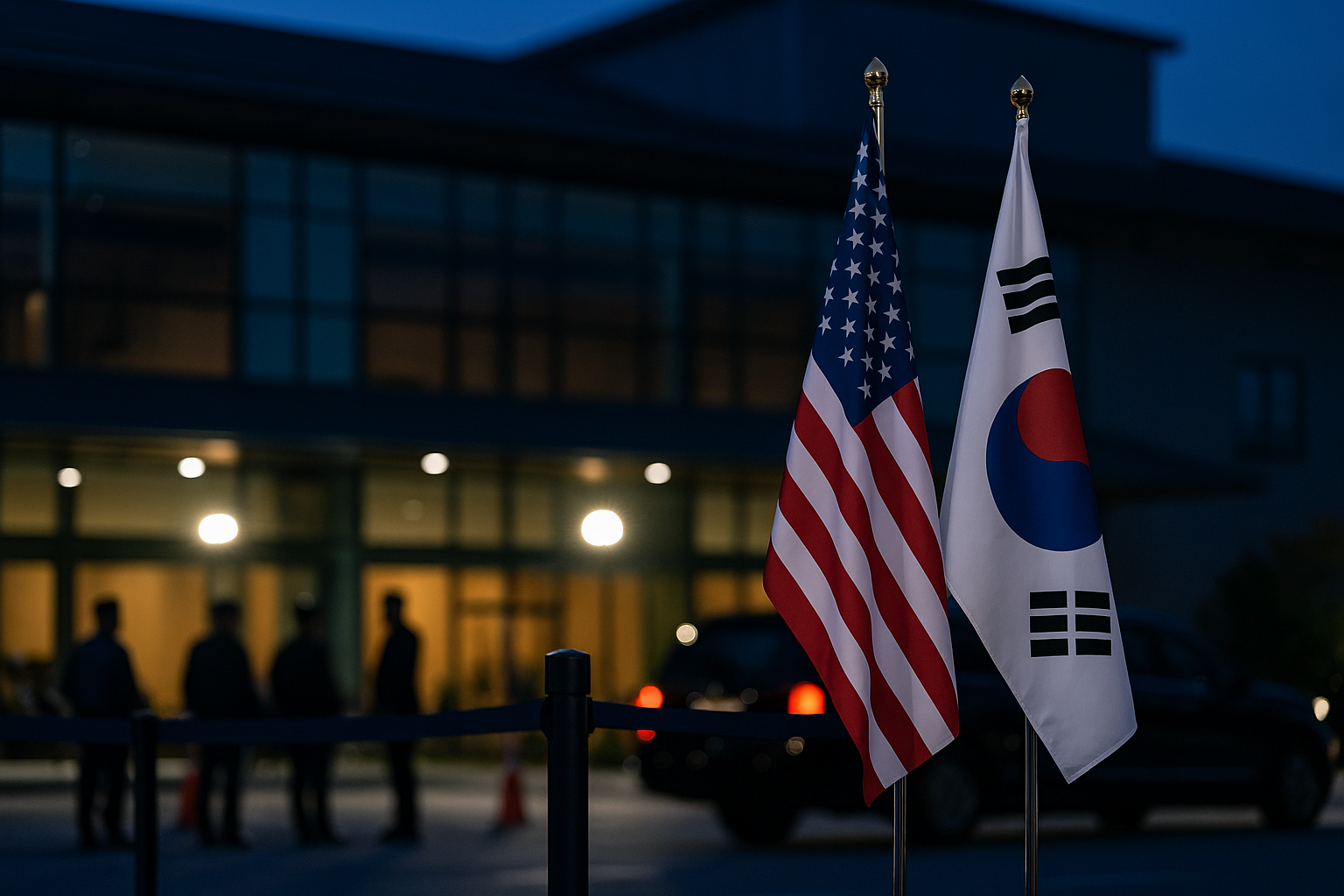Trump, South Korea Discuss Trade as North Korea Fires Missiles
By Tredu.com • 10/29/2025
Tredu

Talks in Gyeongju set a twin agenda: trade and security
President Donald Trump met South Korean President Lee Jae Myung in Gyeongju, aligning on trade priorities and defense coordination as regional tensions flared. The leaders’ offices flagged discussion on bilateral trade, peace on the peninsula, and steps to strengthen deterrence after a North Korean launch cycle. The session anchors the final leg of Trump’s Asia tour and sets the stage for a summit with China’s Xi Jinping later this week in South Korea.
North Korea fires cruise missiles ahead of the meetings
Hours before the engagements, North Korea test fired sea to surface cruise missiles into western waters, part of a pattern that included short range ballistic launches last week. South Korea’s military tracked the tests and assessed flight performance, while analysts read the timing as calibrated signaling before leader level diplomacy. The activity maintained pressure as Trump arrived and as preparations continued for the Trump–Xi summit.
Trade track: from Japan deals to a Korea framework
The South Korea stop follows agreements in Tokyo on trade and rare earths, where Trump praised Prime Minister Sanae Takaichi and signed accords to reinforce mineral and supply chains. With Seoul, officials are working on tariff language that would stabilize rates and minimize new frictions, using the Japan template as a political and legal bridge. Any text would need to mesh with broader Asia talks that aim to reduce uncertainty before year end.
What Seoul wants from Washington
South Korea is seeking clarity on tariff exposures for autos and technology inputs, predictable treatment for strategic sectors, and durable carve outs that support semiconductor and shipbuilding competitiveness. On security, the focus is extended deterrence, missile defense integration, and exercises scaled to North Korea’s recent activity. Lee’s office framed the conversation as trade, peace, and practical steps to steady the peninsula.
How the launches shape the defense conversation
Cruise and ballistic tests complicate signaling as leaders negotiate. Cruise systems can fly at low altitude and present tracking challenges for air defenses, which pushes planners to broaden surveillance layers and expand intercept options. For alliance managers, the immediate task is to adjust posture without letting the tests derail trade work. The pattern of launches into the summit window underscores why defense messages and economic texts are moving in tandem.
Markets watch for a tariff truce and supply chain cues
Investors track whether leader statements translate into concrete tariff milestones and whether rare earths capacity plans extend into allied processing. A credible tariff framework can support autos and industrials, while reduced scarcity risk in magnets often trims premia for select miners. The next test is whether Trump and Xi can convert the week’s choreography into a wider de escalation that calms logistics into the holiday quarter.
The Japan link, and why minerals matter in Seoul
Tokyo’s rare earths and trade accords are a reference point as Seoul weighs industrial policy and supply security. Rare earths sit inside motor, wind, and sensor value chains, and recent Chinese control signals pushed minerals up the agenda. South Korea’s manufacturers want consistent access to inputs as they plan capex and export schedules. Coordination across Japan and South Korea raises the chance that allied processing and offtake commitments reach bankable scale.
Ceremony, optics, and messages to domestic audiences
Asian stops have blended pageantry with policy. In South Korea, receptions and cultural events offered images of alliance renewal, useful for domestic audiences on both sides. The optics did not obscure the core messages: a tariff framework is under construction, North Korea’s launches keep deterrence in sharp focus, and a Trump–Xi meeting could widen or narrow the window for calm. Analysts caution that prior cycles show warm words can fade without enforceable schedules.
What to watch next
Three signposts will shape the tape. First, any joint statement from Trump and Lee that specifies tariff baselines or sector annexes. Second, security readouts that show adjustments to exercises or missile defense posture after the tests. Third, the Trump–Xi summit language on export controls and tariff pauses that would align with the South Korea discussions. Movement on these fronts would confirm that trade talks and security coordination can advance despite North Korea’s missile activity.
Strategy lens for companies
Exporters should map scenarios that include a modest tariff truce and a separate lane for technology screening. Auto and electronics firms will watch for timelines that lock in 2026 rate certainty. Energy and materials executives will track minerals offtake and processing plans that grew out of the Japan stop, since those will influence component pricing and lead times across Korea’s industrial base. The convergence of trade, minerals, and defense suggests procurement teams should maintain dual source options even if truce language lands.

How to Trade Like a Pro
Unlock the secrets of professional trading with our comprehensive guide. Discover proven strategies, risk management techniques, and market insights that will help you navigate the financial markets confidently and successfully.


